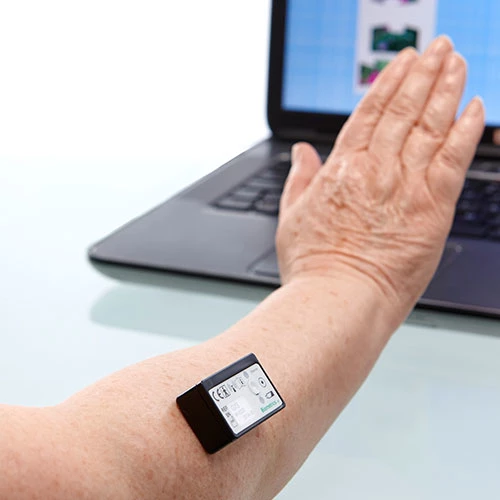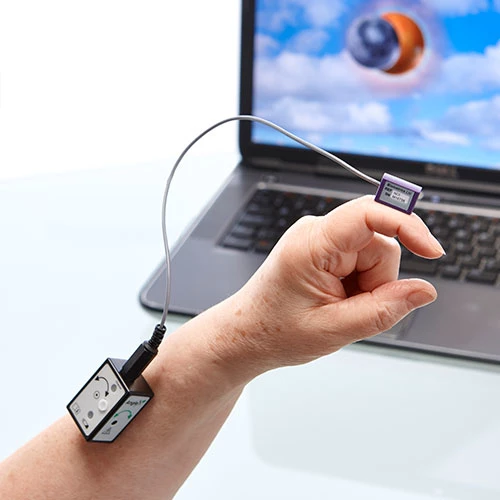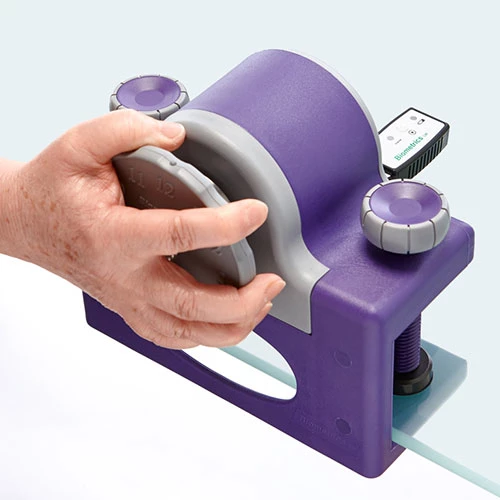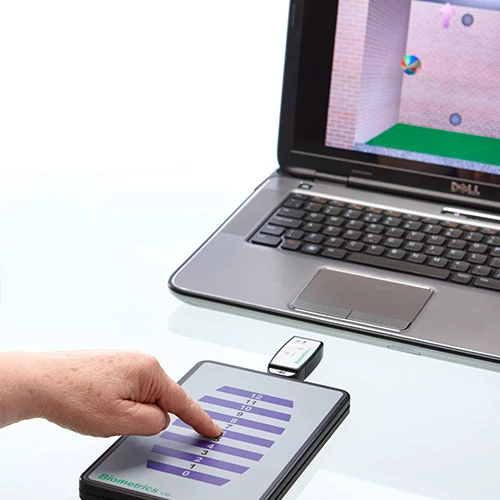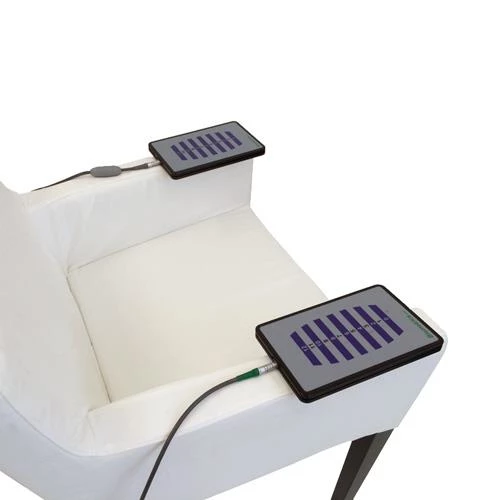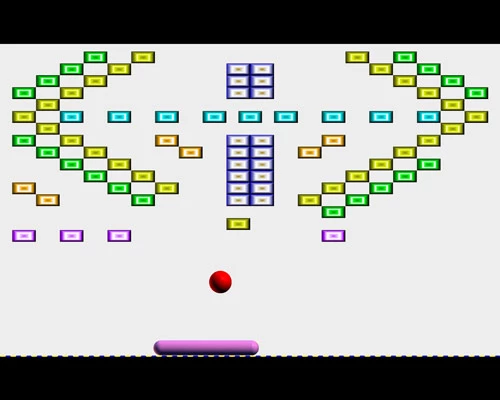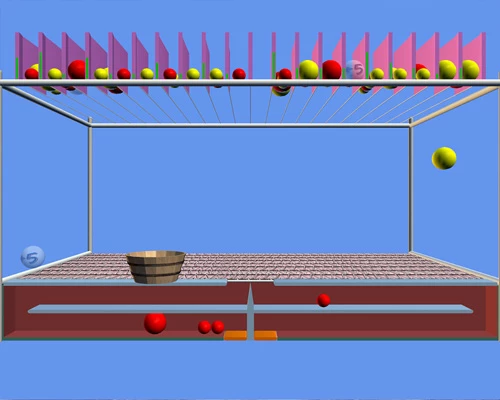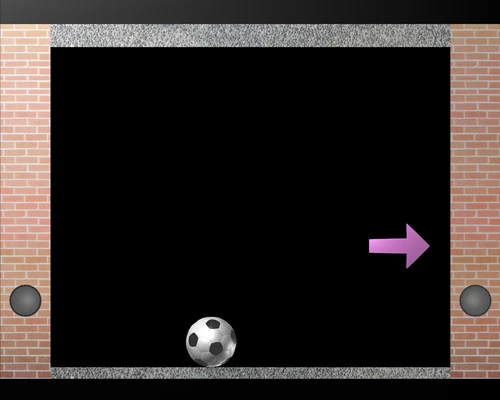Innovative Exercise
Current research considers an early emphasis on exercise for the stroke patient to be essential for promoting a good recovery. The various E-LINK devices and computer-based Activities provide gradable, functional exercise for both the Upper and Lower extremities throughout the full rehabilitation process. E-LINK encourages muscle strengthening and restoration of normal movement patterns.
The ready to use Activities incorporate an element of fun into each therapy session, maximizing the patient's motivation to exercise as well as addressing various cognitive and perceptual issues.
E-LINK Myo-EX
Even in the acute phase of stroke recovery, exercise can begin where there is very little or no visible joint movement by using the unique Myo-EX with innovative computerized Activities. The sensor excitingly detects very small flickers of muscular activity and, using surface EMG, provides immediate biofeedback to the patient through the visual movement of objects on the computer screen. To score in the Activity the patient is encouraged for instance to match colored objects correctly or hit a football against a wall and hold the ball on the wall for a determined length of time. In order to succeed, the patient is focusing on a smooth, efficient and co-ordinated targeted movement rather than recruiting possible unnecessary compensatory movements.
- Myo-EX is ideal for wrist and elbow exercise, focused exercise on the shoulder musculature, knee and ankle exercise and has even been used with certain facial muscles
- Biofeedback is immediate to each stroke patient through the movement of objects on the screen providing a high degree of motivation for exercise
- The precision sensor is designed to give superb quality of signal and can detect as little as 3-4 microvolts of electrical activity
- Full scale reaches up to 3000 microvolts for working with larger deltoid or bicep muscles
- Simply placed on the skin surface over the muscle to be exercised the Myo-EX sensor is quick and easy to apply, with little to no skin preparation, and is ideal for using in a busy clinical environment on a Stroke Unit
Mini Case History #1 - Using the Myo-EX
Stroke Rehabilitation - Mini Case History #1
From the Clinical Specialist in a Major Stroke Rehabilitation Unit
“I have been using the Myo-EX with a young chap with an undefined neuropathy. He had a stroke in 2007, regained his function, but remained aphasic and only had the use of his left hand. After becoming severely ill in January this year, he lost the power in the remainder of his body and was completely dependent.
Recovery was minimal, and work between February and May saw an improvement in his left shoulder and elbow with a very slight wrist improvement. However, after one session with the Myo-EX, a significant improvement was visible and he was very pleased. He was able to stabilise his wrist to a greater degree than anytime previous. Now, strength rarely appears miraculously, and what I think happened is that the Myo-EX taught him to find and isolate the movement in one session, and made him stop recruiting unnecessary movements of shoulder and wrist. It was a great result in a very short space of time and we continue the sessions.”

E-LINK AngleX
Where joint movement is observed but is still insufficient to grasp or hold a device, AngleX sensors are ideal to use with the recovering Stroke patient. They are simply attached close to the joint to be exercised and respond to active movement against gravity, providing focused exercise for gross motor control through to finer movement for even a small DIP joint.
- The small AngleX is used for the fingers, thumb and wrist
- The large AngleX is used for the forearm, elbow, shoulder, hip, knee and ankle joints
- AngleX encourages normal patterns of joint movement and discourages compensatory ones
- Fuss free application, ideal for busy Stroke Units
- No skin preparation needed - simply apply to clean, dry skin using the medical grade tape provided
- Baseline readings are taken in 1 degree increments for the patient's comfortable ROM
- These are automatically entered as the range for the chosen Activity which can be further graded to suit the therapy goals of each individual stroke patient
- AngleX is ideal for focused joint exercise of the Upper and Lower extremities
E-LINK Upper Limb Exerciser
Once the Stroke patient has sufficient grasp to hold items, the Upper Limb Exerciser with various tool handles is ideal for functional, repetitive active exercise. Resistance to the active movement can also be graded for muscle strengthening goals. It is ideal for active and active resistive exercise of the fingers, wrist, forearm, elbow, and shoulder.
- Baseline measurements of the patient's comfortable ROM are taken and automatically entered in the Activities chosen for exercise
- The range can be set to as little as 2 degrees ROM enabling exercise to begin for the stroke patient who has very little movement and gradually grading over time through to an optimal range of motion
- The resistance can be adjusted and graded according to need throughout the rehabilitation process for muscle strengthening exercise
- Realistic goals can be set and achieved, addressing specific therapeutic objectives.
- Most importantly, it is simple to set up and quick to use - ideal for busy Stroke Units, Therapy Groups and Outpatient clinics
Mini Case History #2 - Using the Upper Limb Exerciser
Stroke Rehabilitation - Mini Case History #2
From the Therapist
Using the Upper Limb Exerciser - from the Royal Hospital of Neuro Disability London (published February 2012)
John, a 35 year old male had a TBI which left him severely physically disabled. He was able to express a wish to use the Nintendo Wii for leisure, but was unable to abduct his shoulder sufficiently to allow enough arm movement to use a Wii controller.
The occupational therapists used the Upper Limb Exerciser to build shoulder range and strength, which enabled John to use the Nintendo Wii more efficiently with a view to participating without the need for adaptation in the future.
(Published: Occupational therapy to facilitate physical activity and enhance quality of life for individuals with complex neurodisability. Cunningham, Crystal; Wensley, Ruth; Blacker, Danielle; Bache, Jane; Stonier, Claire. The BJOT, Vol. 75, No 2, Feb 2012, pp.105-110)

E-LINK Dynamometer and Pinchmeter
As the stroke patient progresses through the rehabilitation process, formal evaluations of grip and pinch strength can be assessed with the E-LINK Dynamometer and Pinchmeter which are accurate, sensitive devices, registering as little as 0.1kg/lb strength measurements. This sensitivity enables formal grip and pinch strength evaluation to commence very early in the stroke patient's recovery and continue throughout the full rehabilitation process, monitoring ongoing progress.
Immediately following precise evaluation, the Dynamometer and Pinchmeter are perfectly placed to be used for unique isometric exercise, ideal for stroke patients needing to improve these functional goals.
- Each stroke patient can work to their baseline measurements or the range of force can be graded to meet need. Initially the set range can be reduced if fatigue is an issue for the patient and then gradually increased over time as the patient progresses
- The movement of objects in the Activity (game) is controlled, not only by the application of isometric grip or pinch force defined by the set parameters, but also the relaxation of force. This “letting go” is often the most difficult part for the stroke patient to do or even recognize and the exercise reinforces the normal movement that is needed
- Various Activities encourage movement from zero to a defined peak force taking the patient from full relaxation to their maximum application of force, including the option to sustain force for a determined length of time. For example, Load Ship (moving containers from the quayside to the hold on a ship) encourages the patient to exercise from full relaxed grip (“letting go”) to their maximum or set application of force, and includes the option to sustain or release the grip for a determined gradable period of time
- Other Activities, such as Catch Balls where the patient controls the movement of a basket to catch falling balls, encourage the patient to work to random points throughout their range, thus addressing a functional application of their grip and pinch strength
- The Pinchmeter can be positioned in such a way as to address functional ADL goals, for example key in the door, holding a pen, pressing a doorbell - imperative for independent living
- The Pinchmeter is also ideal for fingertip desensitization exercises in pain management issues
- The various Activities provide purposeful movement, isometric strengthening, motor learning and control as well as a fun, motivational element for exercising further and longer
- A sequence of Activities can be set for each individual patient and then saved to use immediately in their next exercise session. This helps familiarise the patient with the games and saves valuable clinical time
- Following the exercise session E-LINK software generates documentation displaying feedback in graphs and tables to both the patient and clinician, which is useful for reassessing therapy goals
E-LINK ForcePlates
Assessment of weight bearing stability and balance for each Stroke patient can be a major challenge for clinicians. The E-LINK Dual Axis ForcePlate System provides the solution by accurately and objectively assessing the patient's ability to maintain postural stability on a static surface and the software evaluates progress over time that can be used as an outcome measure.
The assessment gives immediate feedback and helps determine where exercise needs to be focused. Baseline measurements of the patient's comfortable range of sway are quickly taken and automatically entered into the software to use with innovative Activities for interactive exercise. The balance training session is therefore totally focused for the individual patient and helps address neuromuscular re-education and balance co-ordination as well as contributing a fun motivational element into the therapy session.
- Baseline measurements are taken of the patient's comfortable limits of stability and this data is then used in the Activities for single axis or dual axis exercise
- Parameters in the Activities can be further graded to suit the patient's physical and cognitive state, thus addressing various therapeutic objectives and ensuring the goals are achievable for each individual patient
- Activities include use of simple graphics and concepts suitable for a stroke patient in early rehab (balancing a see-saw, hitting a ball against two walls), to the more complex designs best suited for patients in the later rehab phase (guiding a marble through a maze, controlling a ball on a platform, matching colors within a set time limit)
- The various Activities encourage the patient to work to the end range of movement (for example Loading Crates on a Ship), to work to various points throughout the range (for example matching colors) or even sustaining balance for a determined length of time throughout the range (for example placing pieces in a jigsaw)…there are numerous options
- To succeed in the game the patient controls movement of objects in the various activities by loading/unloading the weight distributed over the ForcePlates and a score is given at the end of each game, with 80% or more receiving a “well done”
- The Activities can be saved in a set sequence and used again for the next session thus saving set-up time for the clinician as well as familiarising the patient to the Activities
- Exercise graphs are generated for each exercise session and form part of the report and provide opportunity to discuss progress with the patient
- For additional flexibility the ForcePlates can be removed from the BaseFrame and used with other everyday equipment to achieve functional goals – for example, with a gym ball, a wheel chair or a wobble balance board
- ForcePlates can be set up for seated balance assessment and exercise or for bilateral Upper Limb exercise and training
- One ForcePlate can be used for weight bearing exercise from the touch of one finger through to full weight bearing on one limb - ideal for light touch/short duration exercise in pain management for the stroke patient through to full weight loading for strengthening joints and encouraging specific movement patterns
- E-LINK ForcePlates are the ideal, flexible system to use in numerous ways for Stroke rehabilitation
E-LINK Activities
Research over recent years suggests that combining computer games with physical activity has some promising benefits for patients undergoing stroke rehabilitation.
E-LINK Activities have been carefully designed, not only to incorporate an element of fun into every therapy session, but to help maximize the patient's motivation for physical exercise, using various E-LINK devices. A wide range of Activities include ones with simpler graphics and goals as well as others with more engaging ones. They also help address cognitive and perceptual issues specific to stroke patients:
- Concentration
- Attention Span
- Focusing
- Spatial Relationships
- Concrete Reasoning
- Sequencing
- Neuromuscular Re-education and Control
- Cognitive Remediation
- Decision Making
- Color Perception
- Responding to Instructions
- Visual Tracking and Scanning
- Hand/Eye Coordination
- Purposeful Activity
- Sensory Integration
- Visual Field and Visual Attention

